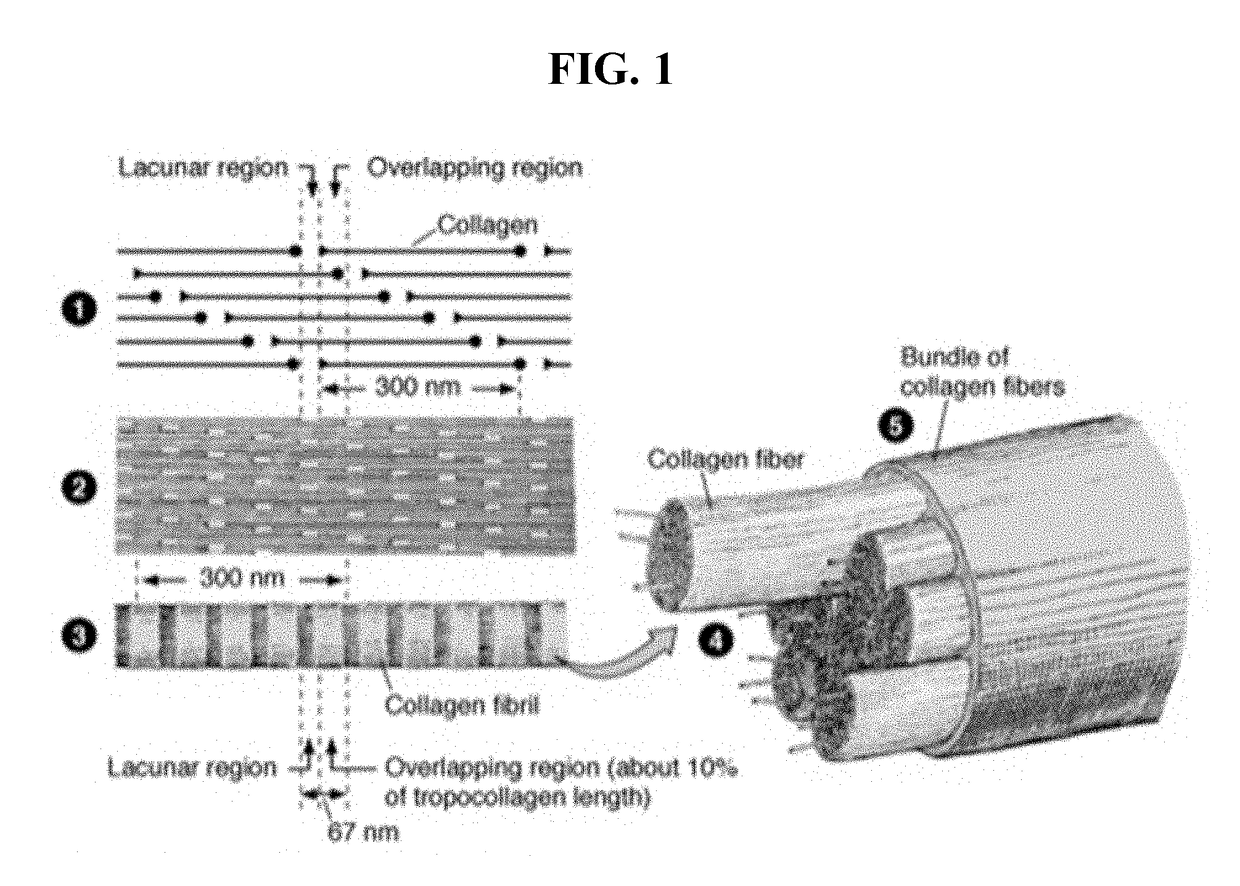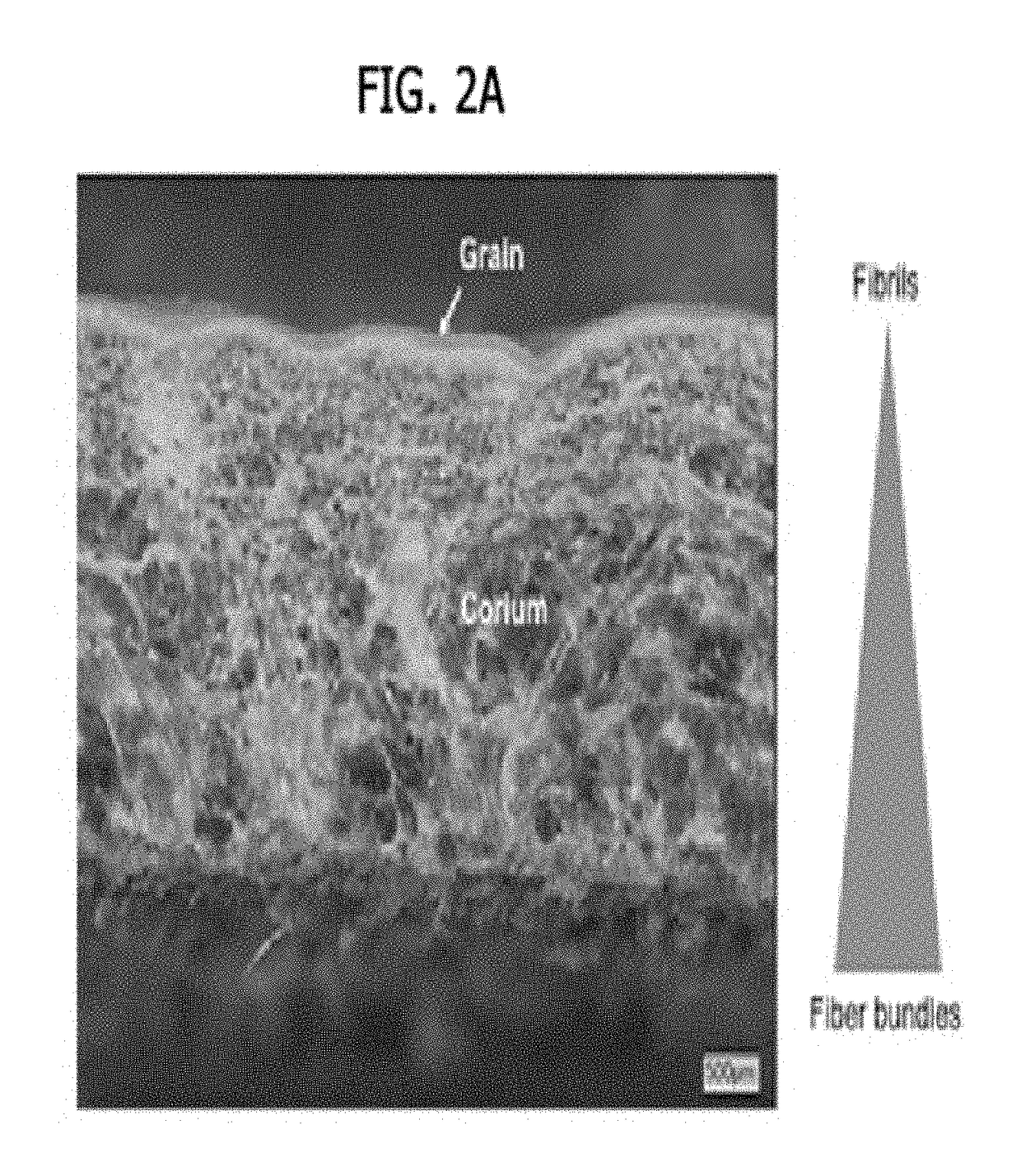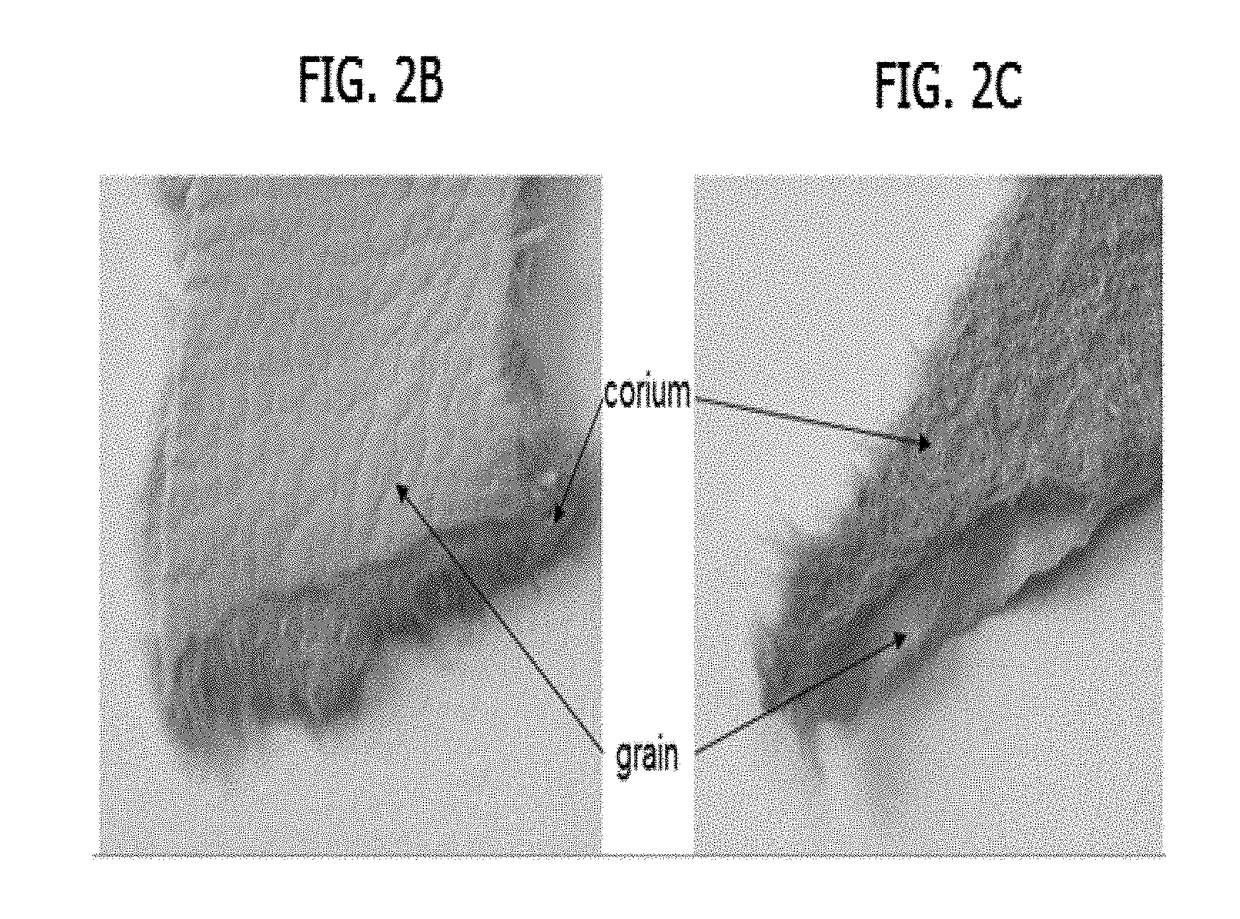Method for biofabricating composite material
a composite material and biofabrication technology, applied in the field of biofabricating leather materials, can solve the problems of increasing the cost of leather, and requiring enormous amounts of feed, etc., and achieves the effects of uniform texture, uniform elasticity or tensile strength, and convenient uniform uptake of dyes and coatings
- Summary
- Abstract
- Description
- Claims
- Application Information
AI Technical Summary
Benefits of technology
Problems solved by technology
Method used
Image
Examples
example 1
Controlling the Thickness of Biofabricated Leather
[0331]The thickness of the biofabricated material used in a composite may be controlled by adjusting collagen content. Hydrogels of extracted bovine type I collagen were formed at different collagen concentrations and volumes to produce dried collagen materials of different thicknesses. Collagen was dissolved in 0.01N HCl at either 5 g / L or 9 g / L, then 1 part 10× PBS was added to 9 parts dissolved collagen to induce collagen fibrillation and gel formation.
[0332]Solutions of either 0.8 L or 1.6 L of the fibrillating collagen were then cast into molds and incubated at 25° C. to allow hydrogel formation. The 0.8 L solution produced a gel of 1.5 cm thickness while the 1.7 L solution produced a gel of 3.0 cm thickness. These gels were dehydrated and lubricated in acetone, then dried and mechanically staked into a leather like material. The thickness of the final dried material correlated with the total amount of collagen in the starting h...
example 2
Production of Biofabricated Leather from Type I Collagen
[0334]The biofabricated component of the composites described herein may be produced from Type I collagen.
[0335]Type I collagen was purchased from Wuxi Biot Bio-technology Company, ltd. (Medical Collagen Sponge). The collagen was isolated from bovine tendon by acid treatment followed by pepsin digestion, and was purified by size exclusion chromatography, frozen and lyophilized.
[0336]The lyophilized protein (4.1 g) was dissolved in 733 ml 0.01 N HCL using an overhead mixer. After the collagen was adequately dissolved, as evidenced by a lack of solid collagen sponge in the solution (at least 1 hr mixing at 1600 rpm), 82 uL of the tanning agent Relugan GTW was added to the solution followed by 81 mL of a 10× PBS, pH 11.2 to raise the pH of the solution to 7.2.
[0337]The solution was then mixed for 3 min before pouring the solution into a silicon mold. The collagen solution was incubated in the silicon mold for 2 hrs at 25° C. to al...
example 3
Production of Biofabricated Leather from Type III Collagen
[0344]The biofabricated component of the composites described herein may be produced using Type III collagen.
[0345]A solution of recombinant collagen type III at 2.5 mg / ml in 0.01 N HCl (FibroGen, Inc.) was fibrillated by adding 1 part of a 200 mM of sodium phosphate solution (22 mL), pH 11.2 to 9 parts of the collagen solution (200 mL) to increase the pH to 7 and stirred 2 hours at room temperature.
[0346]Fibrillation was confirmed by measuring 400nm absorbance of the solution over time.
[0347]After fibrillation, the fibrils were tanned by adding Relugan GTW (2% w / w offer on the collagen) to the fibril suspension and mixing for 30 min.
[0348]The tanned collagen fibrils were then centrifuged at 3,500 RPM for 30 minutes to concentrate the fibrils to a concentration of 10 mg / ml. The 10 mg / ml fibril pellet was further centrifuged using an ultra-centrifuge at 21,000 RPM for 30 minutes yielding a fibril gel with a concentration of ˜4...
PUM
| Property | Measurement | Unit |
|---|---|---|
| Length | aaaaa | aaaaa |
| Length | aaaaa | aaaaa |
| Fraction | aaaaa | aaaaa |
Abstract
Description
Claims
Application Information
 Login to View More
Login to View More - R&D
- Intellectual Property
- Life Sciences
- Materials
- Tech Scout
- Unparalleled Data Quality
- Higher Quality Content
- 60% Fewer Hallucinations
Browse by: Latest US Patents, China's latest patents, Technical Efficacy Thesaurus, Application Domain, Technology Topic, Popular Technical Reports.
© 2025 PatSnap. All rights reserved.Legal|Privacy policy|Modern Slavery Act Transparency Statement|Sitemap|About US| Contact US: help@patsnap.com



